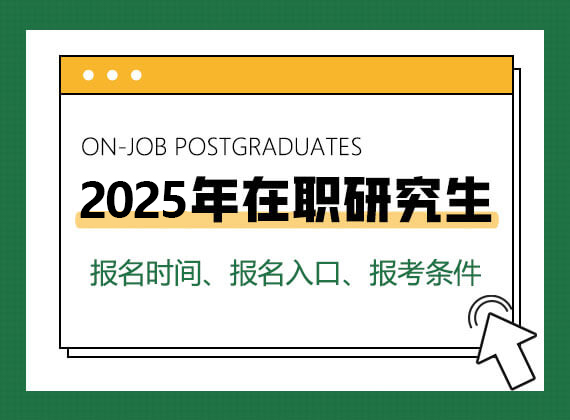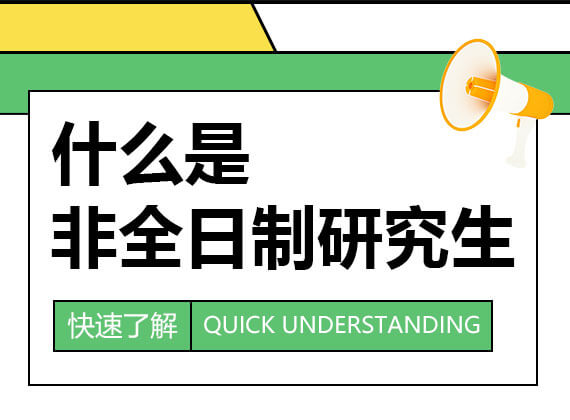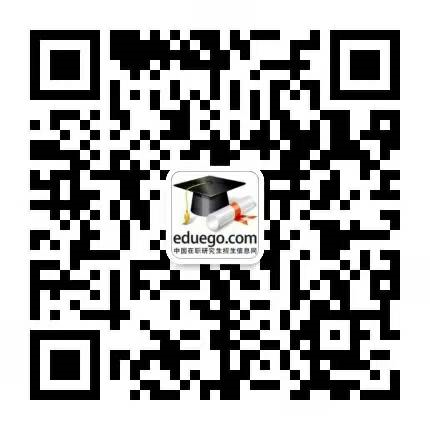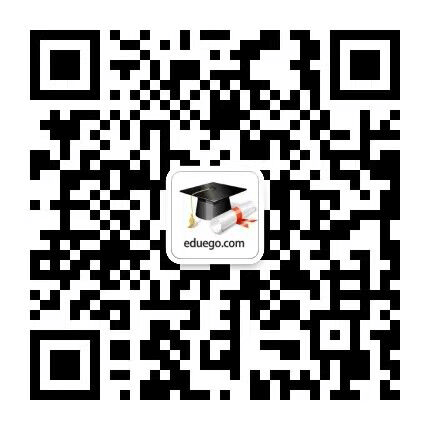2006年工程硕士(GCT)模拟题英语卷及答案
来源:在职研究生招生信息网 发布时间:2011-10-24 14:03:01
2006年工程硕士(GCT)全国考试统考英语卷及答案
第四部分2006年外语运用能力测试(英语)(50题,每题2分,满分100分)
Part One Vocabulary and Structure
Directions:
There are ten incomplete sentences in this part. For each sentence there are four choices marked A, B, C and D. Choose the one that best completes the sentence. Mark your answer on the ANSWER SHEET with a single line through the center.
1. Every plant, animal, and human being needs water to ____ alive.
A. stay B. make
C. run D. glow
2. It ____ commonplace to think of sport as a “leisure industry” now.
A. became B. will become
C. is becoming D. had become
3. Changes in climate ____ slowly through the years.
A. make progress B. take place
C. keep pace D. set sail
4. Scientists can predict regions ____ new species are most likely to be found.
A. where B. when
C. why D. how
5. You should use _____and natural language when you write a personal letter.
A. formal B. political
C. magic D. plain
6. Radios today seldom need _____ or the attention of a technician.
A. to repair B. repaired
C. repairing D. to have repaired
7. It is a great pity for ____ to be any quarrel in the school board meeting.
A. where B. here
C. there D. why
8. Magicians ___ use techniques from science and the arts to deceive the mind and eye.
A. generously B. genetically
C. cleverly D. subsequently
9. To get the best view of Sydney Harbour, take a Sydney Seaplane flight ____ the Harbour and Bondi Beach.
A. above B. under
C. over D. across
10. Chocolate manufacturers blend many types of beans to yield ____ and color desired in the final product.
A. the shape B. the flavor
C. the function D. the brand
Part Two Reading Comprehension
Directions:
In this part there are three passages and one announcement, each followed by five questions or unfinished statements. For each of them, there are four choices marked A, B, C, and D. Choose the best one and mark your answer on the ANSWER SHEET with a single line through the center.
Questions 11-15 are based on the following passage:
Jessica Bucknam shouts “tiao!” (tee-ow) and her fourth-grade students jump.
“Dun!” (doo-wen) she commands, and they crouch (蹲). They giggle (吃吃地笑) as the commands keep coming in Mandarin Chinese.
Half of the 340 students at the K-5 school are enrolled in the program. They can continue studying Chinese in middle and high schools. The goal: to speak like natives.
About 24,000 American students are currently learning Chinese. Most are in high schoos. But the number of younger students is growing in response to China’s emergence as a global superpower.
“China has become a strong partner of the United States,” says Mary Patterson, Woodstock’s principa. “Children who learn Chinese at a young age will have more oppoutunities for jobs in the future.”
Isabel Weiss, 9, isn’t thinking about the future. She thinks learning Chinese is fun. “when you her people speaking in Chinese, you know what they’re saying,” she says. “And they don’t know that you know.”
11. What do the fourth-grade students seem to be doing in the first paragraph?
A. They are learning how to jump. B.They are learning how to crouch.
C. They are learning how to giggle. D. They are learning Chinese.
12. The purpose of the program for Jessica’s students is to ____.
A. enable them to learn how to command
B. get them enrolled in the language program
C. help them to speak how to command
D. continue enrolling more students to learn Chinese
13. In response to the fact that ____, more American students are learning Chinese.
A. the United States is the only superpower in the world
B. international trading is becoming globalized
C. partnership is encouraging business and trade
D. China is emerging as a new superpower in the world
14. Why do more and more young students personally choose to learn Chinese in the United States?
A. They will have more job opportunities in the future.
B. They are more interested in the international trade.
C. They will visit China for further education.
D. They are curious about the corporate partnership.
15. Isabel Weiss has also chosen to learn Chinese because ____.
A. she wants a brighter future
B. she finds it fun to learn the language
C. she likes to do business in China
D. she watches people speak the language
Questions 16-20 are based on the following passage:
The National Aeronautics and Space Administration (NASA) has announced plans to return people to the moon by 2018. “And this time,” according to a NASA press release, “we’re going to stay.”
NASA wants to make a new spaceship for the missions using parts from the Apollo program, which first took people to the moon in 1969, and the space shuttle. NASA says the new Crew Exploration Vehicle (CEV) will be “affordable, reliable, and sage.”
The CEV will be able to hold four astronauts. The plan is to have the CEV dock (对接) in space with the lunar lander---the vehicle astronauts will use to land on the moon---which will be launched separately into space. The CEV will then travel to the moon and all four astronauts will walk on the moon.
The first moon missions are expected to last up to seven days. Exploration and construction of a moon base will be the astronauts’ top priorities (最优先考虑的事). NASA hopes to have a minimum of two moon missions a year stating in 2018. This will allow for quick moon base construction, constant scientific study, and training for future missions to Mars.
16. What is new in NASA’s plan to return to the moon by 2018?
A. People will land and remain on the moon.
B. Equipment will be carried and installed there.
C. More CEVs will be made regularly.
D. A special device will be used in landing.
17. How will NASA make its new spaceship?
A. It will base its design on that of the Apollo program.
B. It will use parts only from the Apollo program.
C. It will make use of the Apollo program and the space shuttle.
D. It will develop new designs and make new components.
18. How will CEV and the moon lander be launched?
A. They will be launched separately.
B. CEV will dock with the moon lander.
C. They will be launched together.
D. The moon lander will hold four astronauts.
19. What will be the astronauts’ top priorities?
A. Entering the orbit and landing on the moon.
B. Landing and walking on the moon surface.
C. Exploration and researches into the moon composition.
D. Exploration and construction of a moon base.
20. The reason why NASA hopes to carry out at least two moon missions a year stating in 2018 is to ____.
A. ensure the moon traveling and the moon base construction
B. speed up the moon base construction and other activities
C. guarantee the quality of the researchers’ scientific study
D. set up new training laboratories for future missions to Mars
Questions 21-25 are based on the following passage:
At the end of the U.S. Civil War, about 4 million slaves were freed. Now, people around the world can hear some of the former slaves’ stories for the first time ever, as told in their own voices.
“That was in slavery time,” says Charlie Smith in one interview. “They sold the colored people. And they were bringing them from Africa. They brought me from Africa. I was a child.”
The Library of Congress released the collection of recordings, Voices from the Days of Slavery, in January. The recordings were made between 1932 and 1975. Speaking at least 60 years after their emancipation (解放), the strorytellers discuss their experiences as slaves. They also tell about their lives as free men and women.
Isom Moseley was just a by at the time of emancipation, but he recalls that things were slow to change. “It was a year before the folks knowed they was free,” he says.
Michael Taft, the head of the library’s archive of folk culture, says the recordings reveal something that written stories cannot. “The power of hearing someone speak is so much greater than reading something from the page,” Taft says. “It’s how something is said---the dialect, the low pitches, the pauses---that helps tell the story.”
21. What is new about the slaves’ stories?
A. They are told in the slaves’ own voices.
B. People travel around the world to hear them.
C. Colored people were sold.
D. They happened in the slavery time.
22. What is the title of the collection of recordings?
A. The End of the U.S. Civil War.
B. The Library of Congress
C. Voices from the Days of Slavery.
D. The Recordings of Written Stories.
23. How many years did it take to complete the collection of recordings?
A. 26 years. B. 33 years
C. 44 years D. 57 years.
24. What do the storytellers tell us about?
A. How they were brought to the United States from Africa.
B. The release of the collection of recordings.
C. What happened 60 years after their emancipation.
D. Their experiences as slaves and their lives as free men and women.
25. The recordings differ from written stories in that ____.
A. the tellers and the government are contributing together
B. the dialect, the low pitches, and the pauses are more revealing
C. the hearing and reading both help tell the stories
D. the power of watching someone write is more engaging.
Questions 26-30 are based on the following announcement:
26. In order to be chosen, applicants must send in ____ before Nov. 30, 2006.
A. their papers and application forms
B. their papers and degree certificates
C. their application forms and diplomas
D. their applications and registrations
27. The number 92354 is the ____ of Loma Linda University SD.
A. fax code B. phone number
C. zip code D. street number
28. The qualifications for the application for the award include all of the following EXCEPT ____.
A. hospital interns, resident or clinical fellows
B. undergraduates, masters or Health Science degree candidates
C. doctorial degree candidates or equivalents
D. Ph. D supervisors or former student award winners
29. Journal of Biomaterials Research will publish ____.
A. the abstract of the paper of the applicant chosen
B. the presented paper of the applicant chosen
C. the abstract and paper of the applicant selected
D. the application form and paper of the applicant
30. It can be inferred that the criterion/criteria for the selection of qualified candidates is/are ____.
A. the qualification of the applicants
B. the quality of the applicants’ papers
C. the number of the papers presented
D. the abstract of the papers submitted
Part Three Cloze
Directions:
There are ten blanks in the following passage. For each numbered blank, there are four choices marked A, B, C and D. Choose the best one and mark your answer on the ANSWER SHEET with a single line through the center.
The hobby of collecting autographs (亲笔签名)is called philography, from a Greek word meaning love of writing. People -31- many kinds of autographs. Some collect signatures or other handwritten materials of authors, composers, movie stars, or sports heroes. Others focus on certain -32- such as the signing of the Declaration of Independence, a presidential election, or the space program. -33- collectors try to acquire a complete set of autographs of Novel Prize winners or Academy Award winners.
Collectors may request autographs -34- celebrities either in person or by letter. Most beginning autograph collectors do not have the knowledge to determine -35- an autograph is genuine (真实的). They may mistake other kinds of signatures for -36- handwritten signatures. For example, some people have secretaries who sigh their mail. Some individuals send out mass-produced letters or signed photographs to collectors who -37- their autographs. Many famous people sue a mechanical device called an Autopen to sign autographs. The -38- can sign 3,000 signatures in eight hours. The only way to recognize an Autopen autograph is to compare two of them. All Autopen autographs are -39- , but no two handwritten autographs are -40- alike.
31. A. neglect B. arrange C. read D. collect
32. A. stories B. events C. actions D.plans
33. A. Some B. Any C. No D. Several
34. A, from B. in C. for D. to
35. A. what B. how C. whether D. where
36. A. false B. indirect C. open D. genuine
37. A. copy B. request C. write D. mail
38. A. actor B. machine C. collector D. secretary
39. A. genuine B. false C. different D. identical
40. A. fluently B. initially C. exactly D. conveniently
Part Four Dialogue Completion
Directions:
In this part, there are ten short incomplete dialogues between two speakers, each follwed by four choices marked A, B, C, and D. Choose the one that most appropriately suits the conversational context and best completes the dialogue. Mark your answer on the ANSWER SHEET with a single line through the center.
41. Steve: Hi, my name is Steve. It’s nice to meet you.
Jack: I’m Jack.____
A. My name is Jack, you know.
B. How are you, Steve?
C. It’s pleasure to meet you, Steve.
D. You’re busy, aren’t you?
42. Jill: Hi, Jane, this is Jill. Do you have time to talk?
Jane: Hi, Jill, ____. I was just watching TV.
A. so what
B. no doubt
C. some time
D. sure
43. Salesman: Good morning, sir. May I help you?
Customer: That’s OK. ____.
Salesman: Fine. Please take your time.
A. I’m just looking around
B. I’m just playing around
C. I’m just sneaking around
D. I’m just hanging around
44. Customer: Could you hold the door open for a moment, please?
Salesman: Certainly. ____.
A. lease take your time
B. I’m sorry I can’t
C. No worry, please
D. Never mind it
45. Harry: I didn’t know you play billiards. Are you having fun?
John: I’m having a great time. ____ What are you doing?
A. Great!
B. How about you?
C. I miss it so much.
D. Do you know billiards?
46. Bob: Why didn’t you come to my party last night?
Bill: I’m sorry, ____. I had to visit my grandmother at the hospital.
A. I did it
B. I still remember it
C. I couldn’t make it
D. I will come
47. Cashier: How can I help you, Miss?
Nancy: ____
Cashier: Sure. How do you want it?
A. Why didn’t you say it then?
B. No, I don’t need your help.
C. Could you break a 20 for me?
D. No, I can manage it.
48. Friend A: This meal is on me. ____.
Friend B: Thanks, but isn’t it my turn to treat you?
A. It’s none of your business
B. I’ll treat you
C. I invite you
D. My pleasure
49. Stewardess: Please put your seat up. We’ll be serving dinner shortly.
Passenger: I’d like to, but there seems to be something wrong with it. ____
A. Can you help with it?
B. Can you stay a few minutes?
C. It’s your duty to fix it.
D. Hold on, please.
50. Student A: Thanks a lot. I really enjoyed your company.
Student B: Don’t mention it. ____.
A. Sorry to keep you out
B. Many happy returns of the day
C. Same here
D. You’re too polite
答案:
1-10 ACBAD CCCCB 11-20 DCDAB ACADB 21-30 ACCDB ACDBB
31-40 DBAAC DBBDC 41-50 CDAAB CCDAC





















